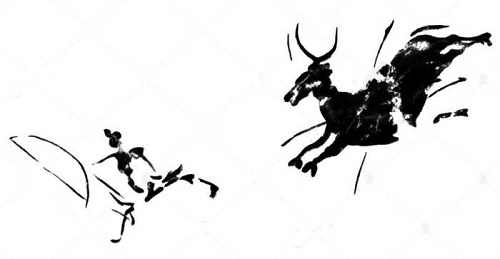FWP:
SETS == A,B; PARALLELISM; POETRY
This is the second and final verse of what seems to be an informal verse-set; for discussion, see {209,6}.
This verse has many of the same kinds of close parallelism seen in {209,6} as well, including conspicuous sound effects-- shikāyat and ḥikāyat resonate perfectly. And in a piquant contrast, sorrow is 'heavy-seated' (in the sense of being 'firmly established'), while endurance is, literally, 'flight-footed' (in the sense of 'running away').
Only one grammatical non-parallelism appears, as a form of adjustment to the meter. The polite imperative kījiye wouldn't have fitted at the end of the first line, so instead there's kīje , which is technically an archaic form of the passive.
This verse also has the same kinds of 'A,B' complexities as the previous one. What is the relationship between the two lines? Are they alternative ways of spending one's time (a bit of this, a dab of that)? Are they two halves of the same coin (grief settles in to the extent that endurance flees)? Is one a cause of the other, and if so which way does the causation go?
In these two verses we seem to have a suggested program of
composition for a poet/lover. But is it merely a thoughtful literary exercise,
an exploration of suitable themes
for future ghazals? Or is it a cri de coeur, a depiction of the constant inner
suffering that makes up the lover's life? The tone might even be light-hearted--
'Just look at all the choices there are!'. (And here 'all' of course may mean
merely the choice of which of the two painful topics is less painful, or the
chance to alternate back and forth for variety.) As usual, it's left to us
readers to decide for ourselves.

Nazm:
[See his discussion of this verse together with {209,6}.]
== Nazm page 238